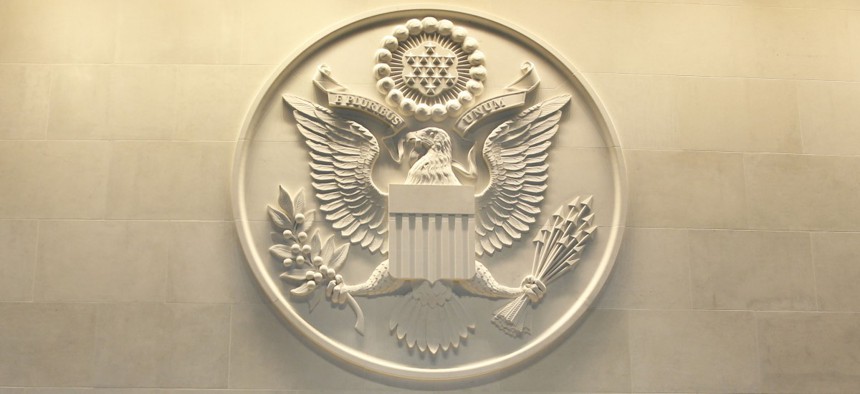GAO: State Department Needs to Do More to Address IT Workforce Challenges

ALASTAIR GRANT/AFP via Getty Images
The agency does not have the necessary data to evaluate its IT staffing practices, according to the watchdog.
The U.S. Department of State has implemented some leading recruitment and retention practices to address its IT workforce challenges, but more is needed to strengthen and measure the effectiveness of these steps, according to a watchdog report released to the general public on July 12.
The U.S. Government Accountability Office examined 15 recruitment and retention best practices for the agency’s IT workforce and found that State has fully implemented one, partially implemented 11, and failed to implement the remaining three. The leading practices that GAO analyzed focused on issues surrounding strategic workforce planning, talent acquisition, talent management, engaging employees and employee morale.
As GAO noted, State depends on skilled IT staff in order to counter cyber threats and maintain operations across four different agency components—Foreign Service, Civil Service, contractors and locally employed staff. A lack of efficient tools for measuring the success of its current practices, however, is having a detrimental impact on State’s ability to attract and retain skilled IT professionals across these four components.
“State's policy calls for access to timely and accurate data to set performance metrics and for a plan to monitor and evaluate progress toward achieving goals,” GAO said in the report. “However, State does not have such IT workforce data needed to set performance metrics, nor does it have a plan to monitor and evaluate progress toward achieving its goals. Consequently, State does not know if its actions are improving its recruitment and retention, and achieving its goals.”
The report identified 10 specific challenges affecting State’s ability to recruit and retain IT staff, including: low entry-level pay with no recruitment incentives, low entry-level pay raises with limited retention incentives, a lengthy hiring and security clearance process, a narrowly-focused marketing and recruitment strategy, a lack of detailed information in job postings, inaccurate job postings and the performance of non-IT work, and limited opportunities for advancement.
“For example, State has collected training performance data, but has not recruited continuously year-round for most of its IT positions or regularly assessed staffing needs,” the report noted. “If State increases its focus on recruitment and retention practices, the department can better compete with other employers for critical IT staff with key skills and abilities.”
Citing the sensitivity of the analysis, the GAO’s public-facing report did not include three of the recruitment and retention challenges that were identified. In response to State officials’ request, GAO also removed its evaluation of IT workforce vacancies and the impact of those vacancies on the agency from the public report.
GAO offered 16 recommendations for State to improve its IT workforce management and strengthen its recruitment and retention practices. These recommendations included updating competency and staffing monitoring tools, obtaining and tracking data to better align employee expectations with agency goals and developing strategies for recruitment and retention incentives.
While State agreed with the majority of GAO’s recommendations, it disagreed with the suggestion that the agency expand the number Foreign Service IT positions available to external applicants year-round, citing the fact that information management technical specialist positions, for example, are more specialized roles and are only posted when there are openings.
In comments to GAO, State said that it is working to address many of the other deficiencies identified in the report. State noted, for example, that it is drafting an IT strategic plan for the Civil Service and the Foreign Service, and that it also plans to design and implement a Foreign Service Applicant Tracking System to determine the effectiveness of the department’s recruitment efforts.






